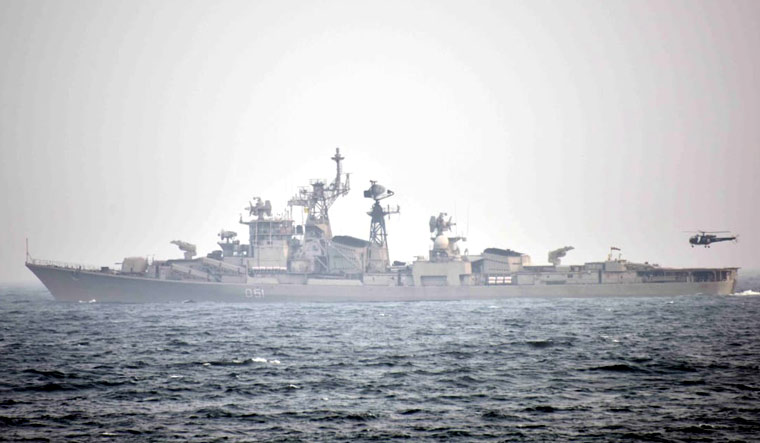SOURCE: THE WEEK

The Indian Navy has decided to refuel and do the necessary replenishment of its warships at sea, for those that are already deployed in international waters on multiple missions. The move is aimed at preventing possible outbreak of COVID-19 on its ships by minimising port calls at foreign shores, besides ensuring non-stop availability of warships for missions.
According to an Indian Navy official, authorities are taking precautionary measures by restricting port calls at foreign shores and ensuring regular medical monitoring of its sailors onboard. “As an action to combat COVID-19, Navy has called off foreign port visits. And any ship returning to port will have at least 14 days of quarantine (including stay at sea),” said a senior naval official. He added that for warships sailing out, the health of all personnel who are to sail is being monitored at least four to five days prior to sailing.
“While no such case has been reported so far, in case of anyone showing symptoms, he will be isolated onboard till the ship returns or the personnel be evacuated,” the official added.
Maintaining that refuelling at sea is a complex task, the Navy official said in order to ensure uninterrupted availability of warships for missions, this is the only viable option, in view of the coronavirus pandemic.
The decision by the naval headquarters gained significance after hundreds of sailors were found COVID-19 infected on US aircraft carrier USS Theodore Roosevelt. The captain of the US aircraft carrier, in a communication to the higher authorities, had described a bleak situation on board as a large number of sailors tested positive for the coronavirus. “We are not at war. Sailors do not need to die. If we do not act now, we are failing to properly take care of our most trusted asset – our sailors,” the letter from the captain of the nuclear-powered carrier, with around 4,000 men on board, read.
According to an official, at present, around 10 naval ships are floating in international waters on mission-based deployments, besides an equal number of offshore security and coastal security patrol vessels. More than 3,000 naval personnel are onboard these warships, a naval officer said, adding that the health and safety of onboard personnel are the main cause of concern.
Last week, Indian Navy used its Shardul-class amphibious warfare vessels to carry out refuelling of INS Tarkash, which has been on mission deployment under Operational Sankalp to monitor the situation in the Gulf of Oman.
In the backdrop of the deteriorating security situation in the Gulf region post attacks on merchant ships in the Gulf of Oman in last year, the Indian Navy had commenced maritime security operations, code-named ‘Operation Sankalp’, to ensure the safe passage of Indian flag vessels transiting through the Strait of Hormuz.
Two ships of the Navy and one ship of the Coast Guard are off the islands of Mauritius and Seychelles as part of the First Training Squadron. INS Sukanya is patrolling in the Gulf of Aden under anti-piracy mission.
Moreover, warships on the harbour are being manned with a complement crew adequate to meet the shore task. The complete crew will only be called in case the ship is going for sailing, a naval officer added.
The Navy has also set up quarantine facilities in all its three commands with the capacity to accommodate around 1,500 personnel. Ghatkopar in Mumbai is already functional with Indians brought back from Iran.
Teams of BattleField Nursing Assistants (BFNA), comprising of non-medical personnel, have been readied to assist medical staff.
from Indian Defence Research Wing https://ift.tt/2X1ZeaM
via IFTTThttp://idrw.org
No comments:
Post a Comment